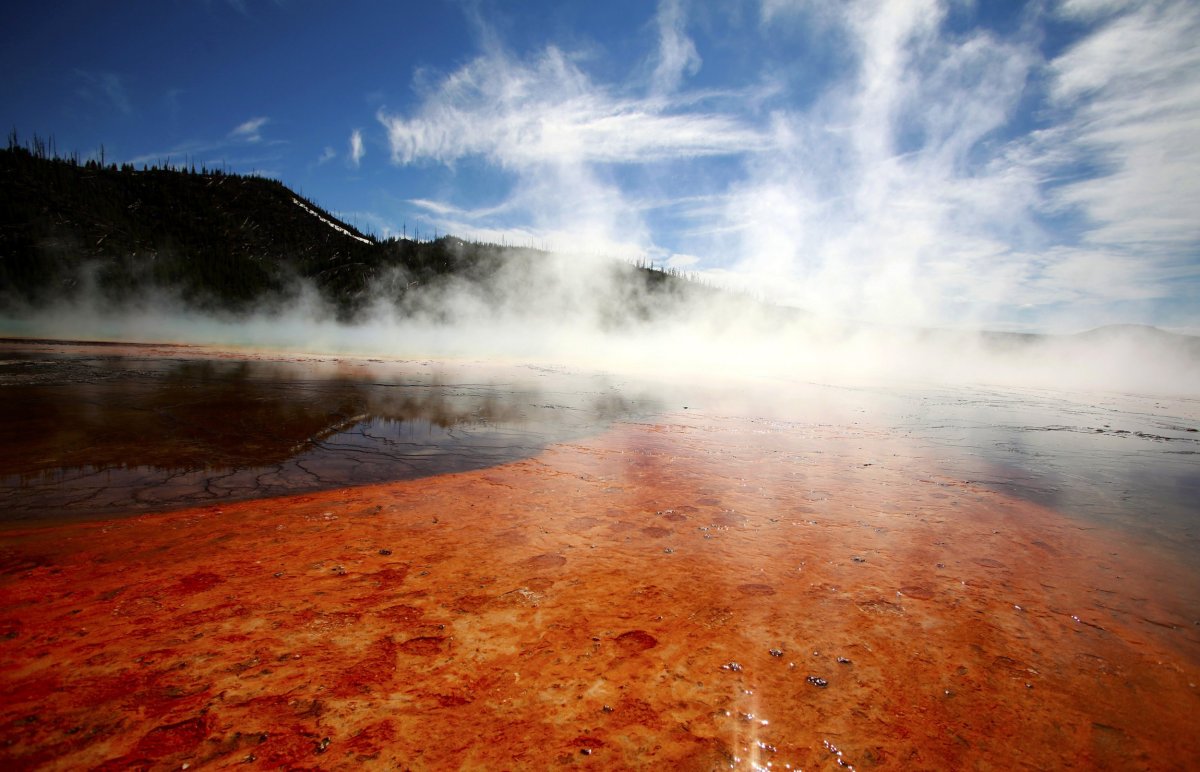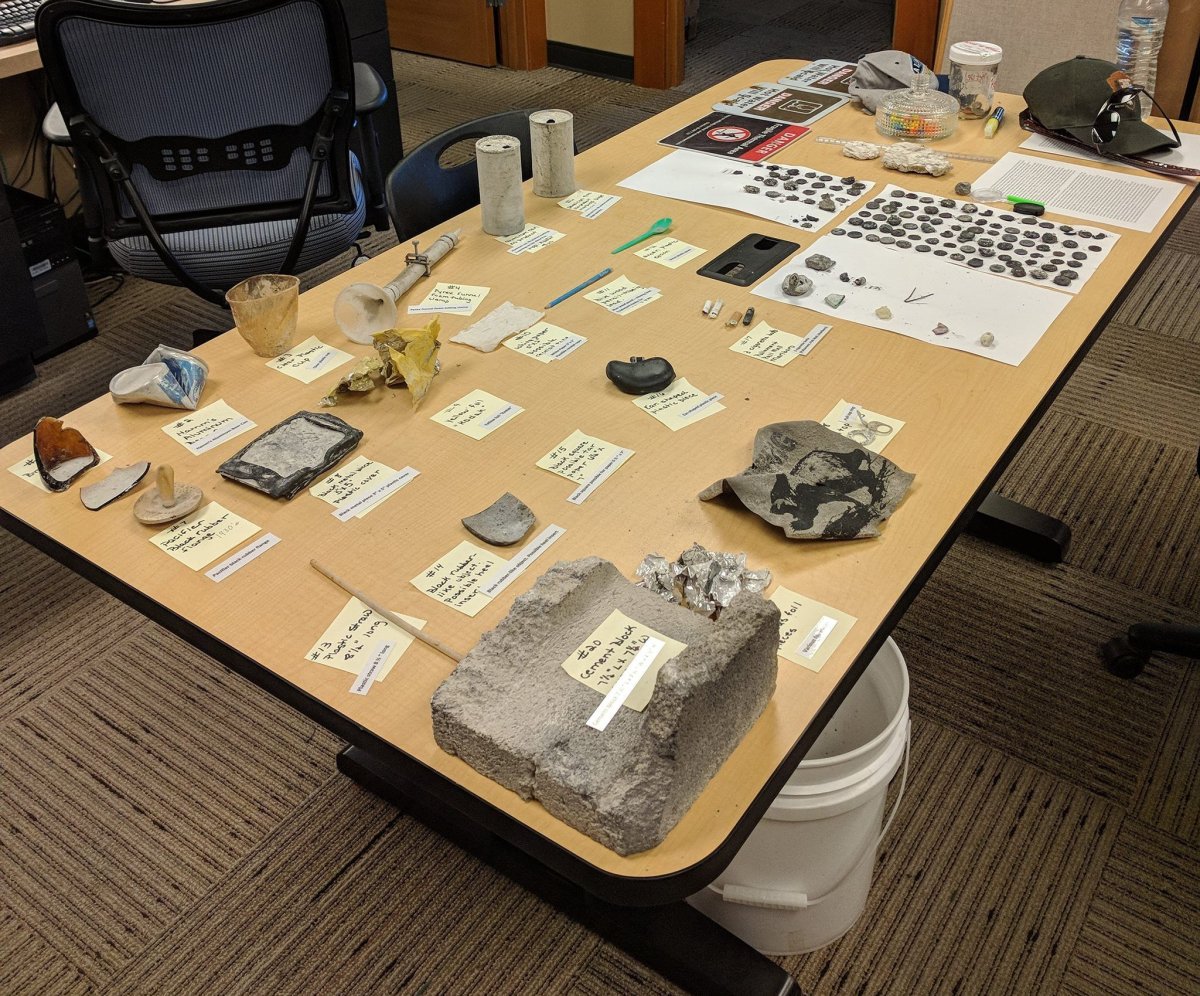Yellowstone is one of the world's few active supervolcanoes. It last erupted 640,000 years ago, when it spewed about 240 cubic miles of volcanic ash, rock and dust into the sky. Scientists who study the volcano are often asked when the next big eruption could be—a docudrama released in 2006 imagined the cataclysmic impact of a major eruption, and it has remained in the public eye ever since.
However, United States Geological Survey (USGS) geologist Lisa Morgan has said there is a hazard associated with the volcano that few people know about. And this hazard is far more likely to happen in our lifetimes than a major eruption.
Writing for the Caldera Chronicles, a weekly column about the goings on at the volcano, she said major hydrothermal explosions take place around once every 700 years. So far, researchers have found at least 25 explosion craters that are more than 320ft wide. "The scale of these craters dwarfs similar features in geothermal areas elsewhere in the world," she wrote.
"Hydrothermal explosions are violent and dramatic events resulting in the rapid ejection of boiling water, steam, mud, and rock fragments. The explosions can reach heights of 2 km [1.2 miles] and leave craters that are from a few meters (tens of feet) up to more than 2 km in diameter. Ejected material, mostly breccia—angular rocks cemented by clay—can be found as far as 3 to 4 km from the largest craters."

These explosions happen when shallow reservoirs of very hot or boiling fluid are interconnected. The fluids can quickly turn into steam if the pressure drops quickly. Because vapor (a gas) takes up far more room than liquid, the pressure skyrockets and a huge explosion ensues.
The biggest hydrothermal explosions took place after a huge ice cap that once covered the National Park receded around 14,000-16,000 years ago, when the last glacial maximum (what we think of as the last ice age) came to an end.
Michael Poland, Scientist-in-Charge at the Yellowstone Volcano Observatory, told Newsweek that it isn't clear when the most recent recent large hydrothermal explosion was. "It's difficult to say for certain, since they are hard to get ages on, but it is probably Indian Pond, on the north side of Yellowstone Lake. That's about 3,000 years old and left a crater 500 meters across. Material might have gone up 2,000 meters or so higher than the ground during the explosion."
Morgan said research indicates hydrothermal explosions are not directly associated with magma. Instead, they appear to be linked to earthquakes. "Critical components for development of large hydrothermal systems require high heat flow, abundant water (Yellowstone Plateau receives about 180 cm [70 in] of precipitation annually, and seismicity [Yellowstone experiences 1000-3000 earthquakes/year] to maintain open fractures," she wrote, adding that it appears these explosions are the end stage of geyser basin evolution.
"Although large hydrothermal explosions are rare events on a human timescale, the potential for additional future events of the sort in Yellowstone National Park is not insignificant. Based on the occurrence of large hydrothermal explosion events over the past 16,000 years, an explosion large enough to create a 328-ft-wide crater might be expected every few hundred years."

Meanwhile, Yellowstone officials recently asked members of the public to stop throwing trash into geysers. In a picture released via its Facebook page, they showed some of the items that have been retrieved from the Ear Spring vent. The biggest eruption at the geyser since the 1950s saw water reaching heights of 30ft.
Among other items, it spewed out a baby's pacifier, tin cans and a concrete block.
"Foreign objects can damage hot springs and geysers," officials said. "The next time Ear Spring erupts we hope it's nothing but natural rocks and water. You can help by never throwing anything into Yellowstone's thermal features!"
This article has been updated to include quotes from Michael Poland.
Uncommon Knowledge
Newsweek is committed to challenging conventional wisdom and finding connections in the search for common ground.
Newsweek is committed to challenging conventional wisdom and finding connections in the search for common ground.
About the writer
Hannah Osborne is Nesweek's Science Editor, based in London, UK. Hannah joined Newsweek in 2017 from IBTimes UK. She is ... Read more
To read how Newsweek uses AI as a newsroom tool, Click here.








